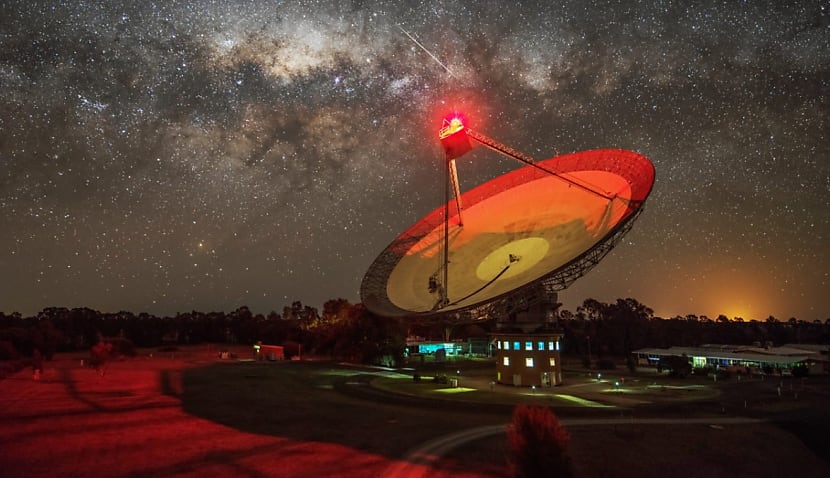The work by Dr Daniel Reardon and Dr Andrew Zic helps back up Einstein’s theory that space-time is a four-dimensional fabric that can be affected by events such as exploding stars and merging black holes.
The research in Australia has significantly coincided with similar evidence published on the same day in China, Europe, India, and North America.
Dr Reardon and Dr Zic will be appearing in the Space Connect Podcast next week to talk through their findings.
The 64-metre Murriyang telescope, outside the central-west NSW town of Parkes, has been in operation since 1961. It operates 24 hours a day, every day of the year and is operated by CSIRO, the Australian government agency responsible for scientific research.
“For nearly 20 years, the Parkes Pulsar Timing Array collaboration has monitored a set of rapidly spinning stars that pulse like a lighthouse, called pulsars,” said CSIRO, announcing the breakthrough.
“They are looking for nanosecond pulse delays caused by gravitational waves to provide further evidence for Einstein’s general theory of relativity and build on our understanding of the universe.
“By compiling and analysing this large data set, the team has taken another step towards detecting gravitational waves through the study of pulsars.
“In 2015, researchers from the LIGO and Virgo collaborations made the first direct observation of gravitational waves caused by the collision of two stellar-mass black holes.
“In contrast to these gravitational waves, which oscillate multiple times per second, the Parkes Pulsar Timing Array collaboration is searching for gravitational waves emitted by binary supermassive black holes at the centres of galaxies.
“These gravitational waves oscillate over timescales of many years.”
OzGrav and Swinburne University of Technology researcher Dr Daniel Reardon, who led the search, said that as gravitation waves pass over the Earth, they will change the rotation frequency of fast-spinning pulsars.
“We can detect gravitational waves by searching for pulses that arrive earlier or later than we expect. Previous studies have shown an intriguing signal in pulsar timing array observations, but its origin was unknown,” Dr Reardon said.
“Our latest research has found a similar signal among the set of pulsars we’ve been studying, and we now see a hint of the fingerprint that identifies this signal as gravitational waves.
“Unlike stellar-mass bursts of gravitational waves, supermassive black holes take years or decades to complete their orbits, and so their signature takes a decade or more to emerge.”
CSIRO astronomer Dr Andrew Zic, who co-led the analysis, said that while it is exciting all the major collaborations are seeing hints of the waves, the true test will come in the near future when all of the data is combined into a global dataset.
“This signal could still be caused by things like variations in a pulsar’s rotation over a long period of time, or may simply be a statistical fluke,” Dr Zic said.
“Our Parkes radio telescope, Murriyang, has an advanced receiver and an excellent view of the best pulsars in the southern sky, which are essential for this work.
“The next step is to combine pulsar datasets collected by telescopes in both the northern and southern hemispheres to improve the sensitivity of our observations.”
Now groups worldwide, as part of the International Pulsar Timing Array consortium, are combining their data to rule out anomalies.

Adam Thorn
Adam is a journalist who has worked for more than 40 prestigious media brands in the UK and Australia. Since 2005, his varied career has included stints as a reporter, copy editor, feature writer and editor for publications as diverse as Fleet Street newspaper The Sunday Times, fashion bible Jones, media and marketing website Mumbrella as well as lifestyle magazines such as GQ, Woman’s Weekly, Men’s Health and Loaded. He joined Momentum Media in early 2020 and currently writes for Australian Aviation and World of Aviation.

